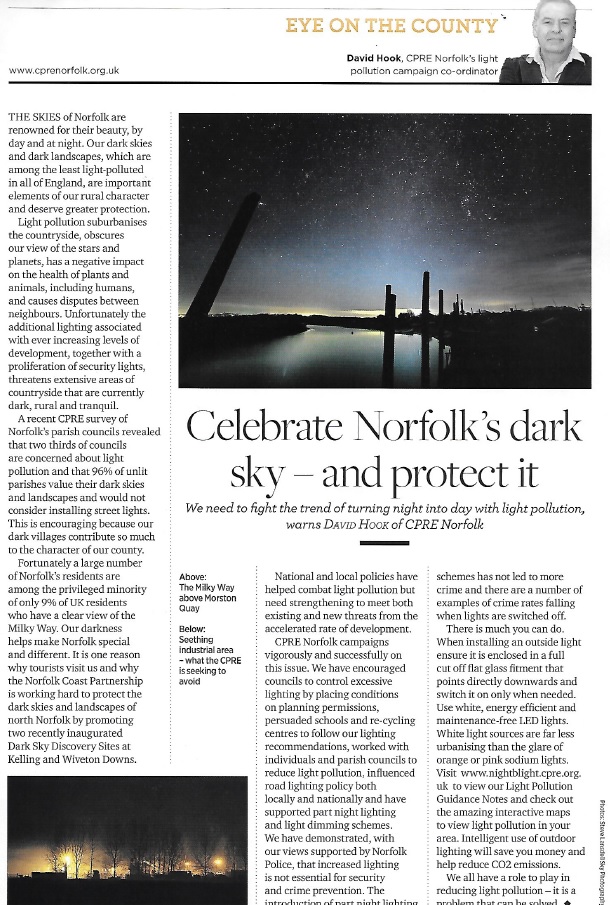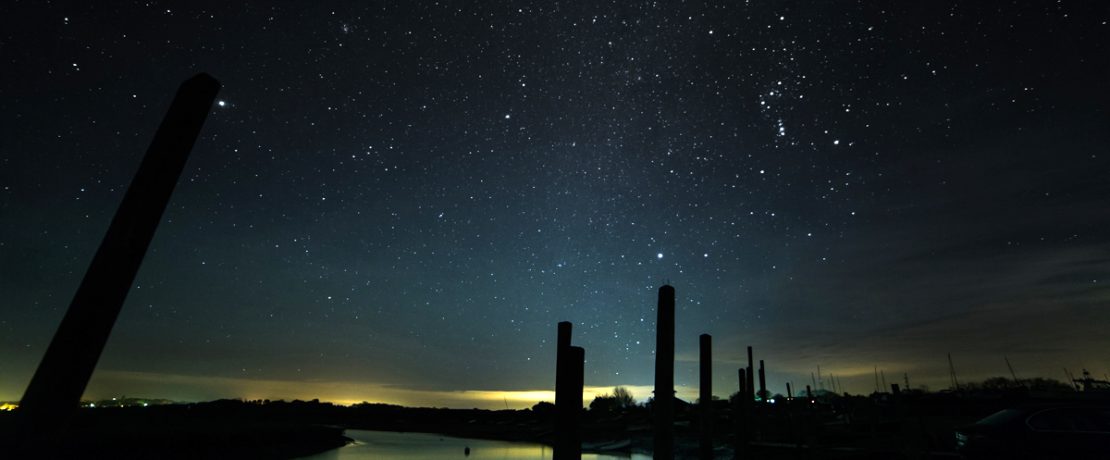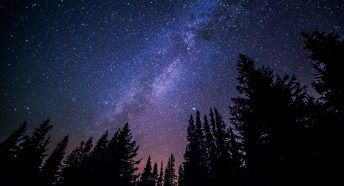Celebrate Norfolk’s dark sky – and protect it
We need to fight the trend of turning night into day with light pollution, warns David Hook of CPRE Norfolk.
The skies of Norfolk are renowned for their beauty, by day and at night. Our dark skies and dark landscapes, which are among the least light-polluted in all of England, are important elements of our rural character and deserve greater protection.
Light pollution suburbanises the countryside, obscures our view of the stars and planets, has a negative impact on the health of plants and animals, including humans, and causes disputes between neighbours. Unfortunately the additional lighting associated with ever increasing levels of development, together with a proliferation of security lights, threatens extensive areas of countryside that are currently dark, rural and tranquil.
A recent CPRE survey of Norfolk’s Parish Councils revealed that two thirds of councils are concerned about light pollution and that 96% of unlit parishes value their dark skies and landscapes and would not consider installing street lights – encouraging results because our dark villages contribute so much to the character of our county.
Fortunately a large number of Norfolk’s residents are among the privileged minority of only 9% of UK residents who have a clear view of the Milky Way. Our darkness helps make Norfolk special and different. It is one reason why tourists visit us and why the Norfolk Coast Partnership is working hard to protect the dark skies and landscapes of North Norfolk by promoting two recently inaugurated Dark Sky Discovery Sites at Kelling and Wiveton Downs.
National and local policies have helped combat light pollution but need strengthening to meet both existing and new threats from the accelerated rate of development.
CPRE Norfolk campaigns vigorously and successfully on this issue. We have encouraged councils to control excessive lighting by placing conditions on planning permissions, persuaded schools and re-cycling centres to follow our lighting recommendations, worked with individuals and parish councils to reduce light pollution, influenced road lighting policy both locally and nationally and have supported part night lighting and light dimming schemes.
We have demonstrated, with our views supported by Norfolk Police, that increased lighting is not essential for security and crime prevention. The introduction of part night lighting schemes has not led to more crime and there are a number of examples of crime rates falling when lights are switched off.
There is much you can do. When installing an outside light ensure it is enclosed in a full cut off flat glass fitment that points directly downwards and switch it on only when needed. Use white, energy efficient and maintenance free LED lights. White light sources are far less urbanising than the glare of orange or pink sodium lights.
Visit https://nightblight.cpre.org.uk to view CPRE’s Light Pollution Guidance Notes and check out the amazing interactive maps to view light pollution in your area. Intelligent use of outdoor lighting will save you money and help reduce CO2 emissions.
We all have a role to play in reducing light pollution – it is a problem that can be solved.
This article appeared in the January 2018 edition of Norfolk Magazine.









